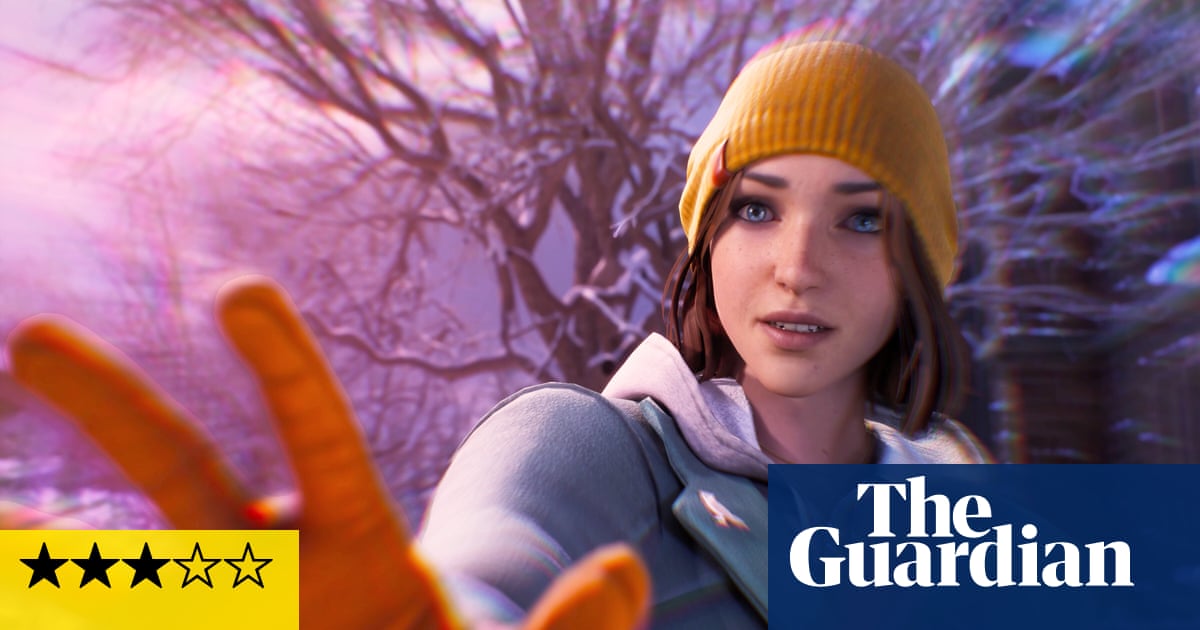In 2015, when I first played as Maxine Caulfield in the original Life Is Strange, it was only the second time I had ever played a game starring a teenaged girl. (The first time was The Last of Us: Left Behind, which came out the year before.) It was an awkward game in a few ways, particularly its cringeworthy (mis)use of teen slang, but the intense, life-changing and sometimes conflicted relationship between Max and her (more than) friend Chloe rung true. It carried the whole game, actually, more than Max’s time-rewinding powers or the murder mystery that powered the plot. I believed in Max and Chloe. The end of that game forces you into a horrible choice between, as Max would put it, two shitty futures, proving that even time travellers must live with the consequences of their actions. The reverberations of that choice run through this sequel, nine years later.
Grownup Max is now artist in residence at a prestigious arts college, placing her somewhere between the students, with their parties and dramatic breakups and secret societies, and the teachers in the faculty, whose pettiness and preoccupations with their own agendas rarely paint them in a flattering light. She abandoned her home town and stopped using her time-rewinding powers after the events of the first Life Is Strange. Now she is tentatively trying to form new relationships in this fresh place. And, as she discovers when one of her new friends is murdered, she has a new power, too. She can slip between timelines, investigating the murder both in the timeline where it happened, and in an alternative reality where it didn’t.
Max discovers she has the ability to move between timelines. Photograph: Square Enix
I’ll say it upfront: Double Exposure does not stick the landing. There is so much potential in this setup and these characters, but it just doesn’t quite come together. Some characters are great, believable and consistent; others, such as the cop competing with Max to solve the murder, behave ridiculously, or are maddeningly inconsistent, like Vinh the playboy actor who alternately sneers at Max and confides in her. There are some truly excellent individual scenes and moments here, particularly the intimate ones between Max and her friend Safi, and Max and the cute bartender she has a gigantic crush on: whoever wrote their first date deserves a raise. There are also two really good end-of-chapter twists in the story that made me really want to know how things were going to turn out.
But none of it quite comes together in the end. There are plenty of small holes in the plot that, together, almost cause it to unravel. In service of this sometimes dodgy plot, characters do things that simply don’t make sense, causing me to shout “Why would you do that?” at the screen on more than one occasion. I purposely screwed over one character again and again just to see how they’d react, but they still seemed keen to be friends – because, it turned out, the story needed them later. The portrayal of grief and its effects, too, which really should be a key theme of the game for all kinds of reasons, is tonally off. I was so preoccupied by this that it really killed my sense of personal investment in Max and her story, and narrative games rely on their players feeling invested.
The journal that once provided a little more insight into adolescent Max’s inner life returns here, alongside messages and a social media network that live on her phone, letting you see conversations between characters and catch up on what happened to the surviving folk from Max’s home town. I personally hated this; phone notifications kept popping up relentlessly as I was exploring the beautiful surrounds of Caledon University, and much as in real life, I ended up getting overwhelmed and ignoring them entirely. But they do provide some much-needed further context on the people surrounding Max and their relationships with each other.
Life Is Strange: Double Exposure trailer – video
The first Life Is Strange was a clever twist on the idea of choice and consequence in narrative games: how does it change things if you can always rewind and pick a different option? Double Exposure’s message is very different: a grownup Max is now determined to live in the present, however hard it is. This Max knows that nothing feels consequential if you can simply undo it. But she hasn’t lost her spark; she’s still thoughtful, determined, and just that little bit cringe. It has been a pleasure to be reunited with her. There are some wonderful lines and concepts in this game, enough to make me all the more frustrated that it’s so inconsistent. The ending, particularly, was infuriating, though it does set things up intriguingly for another sequel. I hope that Deck Nine can build on this with whatever comes next.
Life Is Strange: Double Exposure is out now; £49.99
